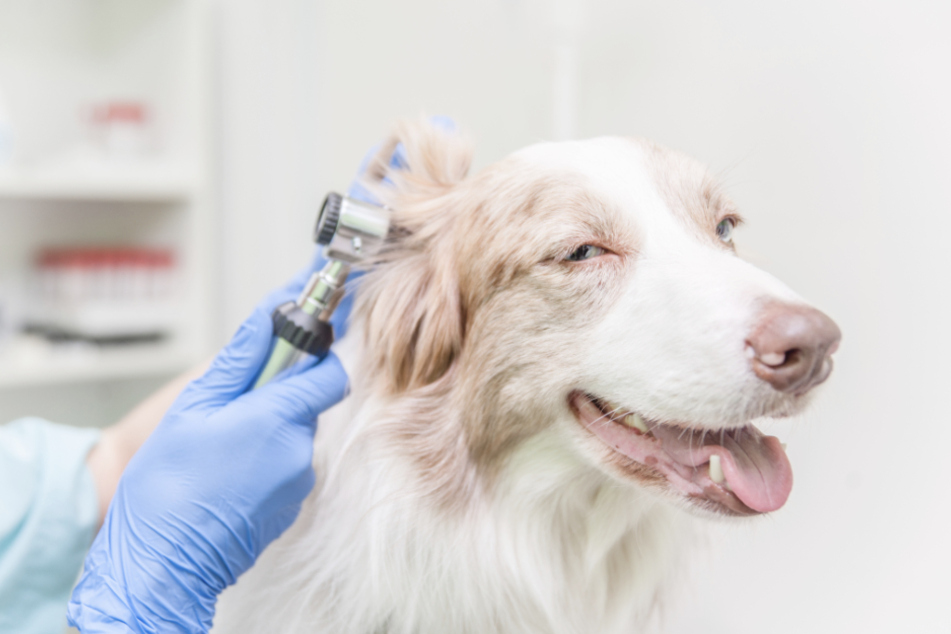Patterned like a leopard or marbled: Some dogs have an individual and distinctive coat color. The unique fur makes Merle dogs very popular. However, the so-called Merle factor is highly controversial in dogs.
Since people understood how to selectively combine and breed the various traits of dog breeds, there are almost no limits to variety. Consequently, the number of dog breeds in various forms is steadily increasing.
Optical aspects such as eye and coat color also play a role in dog breeding. Because they are particularly beautiful and popular, Australian Shepherds or Border Collies are deliberately bred with speckled fur. This fur is called “merle.”
As the demand for such dogs increases, the Merle gene is crossed into many dog breeds. For researchers and breeders, this is reason enough to delve into the genetics of Merle.
This dog guide explains what lies behind the unique Merle coloration in dogs.
What is the Merle Gene?
Understanding Merle is not easy because the genetics behind it are quite complex. In research and dog breeding, various theses, views, opinions, and myths circulate regarding Merle.
In dog fur, there are three base colors: brown, black, and red. The color of a dog’s coat is determined by the pigments eumelanin (black-brown pigment) and phaeomelanin (red pigment). The genes of the animal determine how many pigments the dog forms in its fur and what colors ultimately emerge.
In dogs with the Merle gene in their genes, the Silver locus gene (Pmel17) is mutated. Specifically, additional pieces of DNA were inserted into the actual genome (SINE insertion). There are different Merle types, distinguished by the base pair length of the alleles. The longer they are, the more pronounced Merle is. The specific alleles in an individual Merle dog are primarily relevant for breeding.
The Merle mutation in the Silver locus gene lightens the areas of the coat where only eumelanin occurs. The fur, where only phaeomelanin is present, usually remains unchanged. Thus, Merle is a pigment disorder due to a gene defect or mutation.
As the areas in the fur that are supposed to be black are lightened or marked white, the dog’s coat appears speckled, spotted, or mottled. The dark areas look torn. In some Merle dogs, the unique and irregular pigmentation resembles marble.
A dog is either Merle or not. The expression varies from dog to dog. In many Merle dogs, it manifests as spots, while in others, entire fur areas are altered. In specific cases, the pigment is “erased,” making the dog appear entirely white. Some dogs with the Merle gene have an unchanged coat.
Eumelanin is also relevant for the coloration of the dog’s eyes, nose, and skin. In dogs with the Merle gene, the eyes are often strikingly blue or brown. It is possible for both eyes to be differently colored.
Tip
Those who want to delve deeply into the topic should explore the works of breeder Verena Priller, veterinarian Jana Westerveld, and Canadian breeder Mary Langevin.
Merle Dog: Color Variations

The Merle variant resulting from the gene mutation depends on the dog’s original base coat color. Merle is a somewhat unstable mutation that can lead to various manifestations.
Red Merle:
Red Merle refers to dogs whose fur is reddish or brownish speckled. The coloring occurs when the red component in the fur is relatively high, and black is lightened or erased. Red Merle is relatively rare.
The coloring is called Red Merle, Chocolate Merle, or Brown Merle. If Red Merle is not very pronounced, only individual hairs are colored, and the fur has an unusual reddish tint.
Blue Merle:
In Blue Merle or Black Merle, the dog’s fur is mostly gray with black spots. This discoloration occurs when the original base color of the fur would have been black.
In some cases, the fur of the Merle dog is silver-gray with a bluish tint.
The Merle coloration is now recognized as a breeding standard for several dog breeds by the World Canine Organization FCI (Fédération Cynologique Internationale).
Mosaic Dogs:
Mosaic dogs are a special case. Optically, Mosaic is not clearly distinguishable from the usual Merle. The uniqueness of these dogs is that they carry different information or alleles in their cells, which they can then pass on.
Dog Breeds with Merle Factor

Many dog owners find dogs with the Merle factor particularly beautiful. Due to the demand, Merle is deliberately bred and crossed into various dog breeds.
These dog breeds are bred with the Merle gene:
- Australian Shepherd
- Beauceron Sheepdog
- Border Collie
- Cardigan Welsh Corgi
- Catahoula Leopard Dog
- Chihuahua
- Cocker Spaniel
- Collie
- Dachshund
- Great Dane
- Norwegian Hound
- Pit Bull
- Pomeranian
- Pyrenean Shepherd
- Shetland Sheepdog
This list is not exhaustive. Dogs with the Merle factor can be sold at high prices, making it very tempting for breeders to introduce the gene into every dog breed.
Once one understands the breeding with the Merle gene, it can be crossed into various dog breeds. The same genetic rules apply.
Merle Dog: Are There Health Problems?
The problem or challenge in breeding dogs with the Merle factor is that this gene mutation can affect not only the coat color but also other areas of the dog’s body.
Eyes and Ears in Merle Dogs:
Most Merle dogs have no complaints and are entirely healthy.
However, as with many other genetic changes, a white coloration is associated with a health risk because white is the absence of pigment. In rare cases, Merle can cause sensory organ defects such as malformations of the eyes or inner ear.
The reason is that the pigment eumelanin is not only important for coloration but also for the function of the sensory organ. If it is reduced or entirely absent, as in Merle, it can lead to impairment of the organ.
The same applies to other pigment-erasing genes such as Whitehead, piebald, and the harlequin modification in Great Danes.
Double Merle

The most concerning form of the gene mutation is colloquially referred to as “Double Merle” or “White Tiger.” Double Merle can occur in breeding with specific combinations of Merle dogs. In rare extreme cases, these animals have a completely white fur with only a few colored spots.
Possible problems of “Double Merle dogs”:
- Impairment of hearing up to deafness
- Blindness
For this reason, in the United Stated, according to the Animal Welfare, it is prohibited to pair two animals with certain Merle genes.
However, it is possible that animals with Double Merle are accidentally bred because not all dogs with the Merle gene show the phenotypic expression (eye and fur coloration). The risk of breeding a sick Merle can be significantly reduced by testing the genes of breeding animals meticulously and then allowing only specific combinations in breeding. A certain residual risk due to random mutations exists in every breeding, whether it involves Merle or not.
Unscrupulous and illegal breeders do not care if the animals are healthy. It is all about profit. Anyone looking to acquire a Merle dog should pay attention to reputable breeding when making a purchase. It is best to assess the living conditions of the dogs on-site.
Merle is genetically detectable, but such tests incur costs. Unfortunately, not all breeders are willing to pay this price.

Conclusion
When acquiring a dog, it is crucial to remember that it is not a fashionable accessory but a living being. What ultimately matters is the health of the dog. When buying a Merle dog, focus on reputable breeding.


